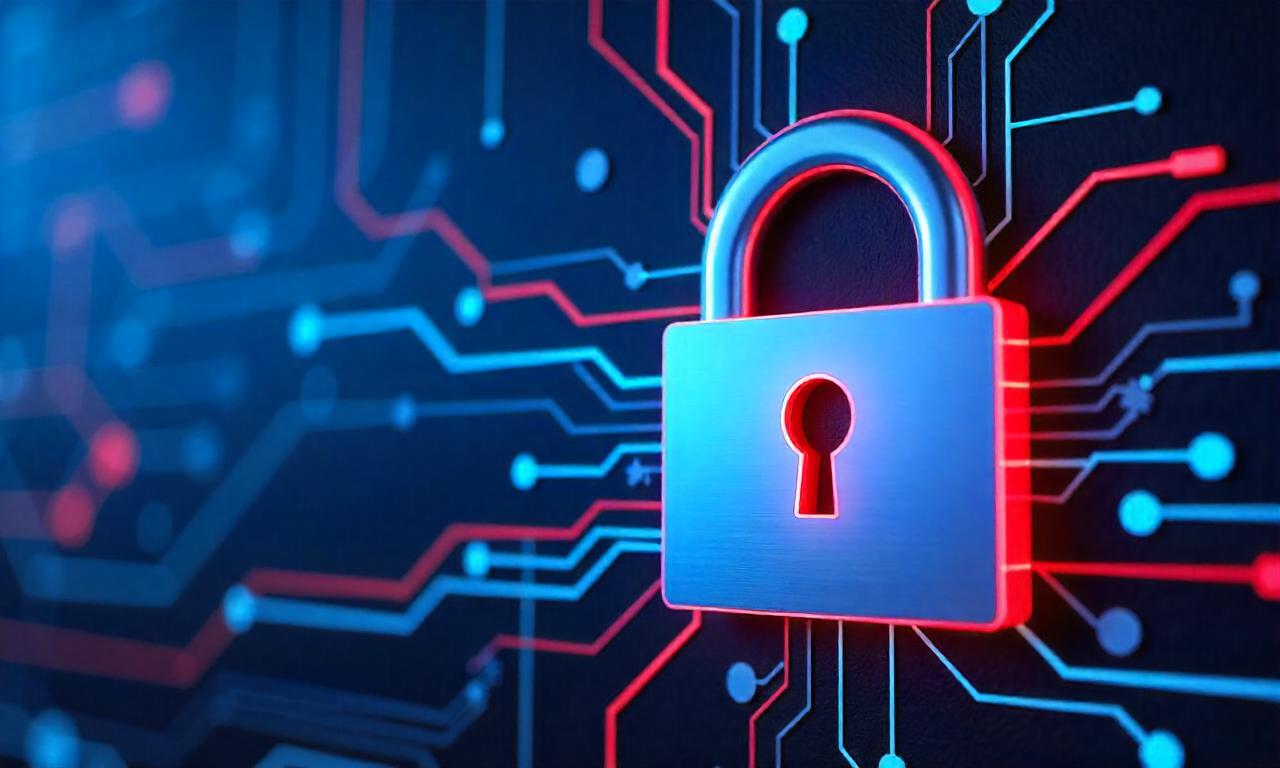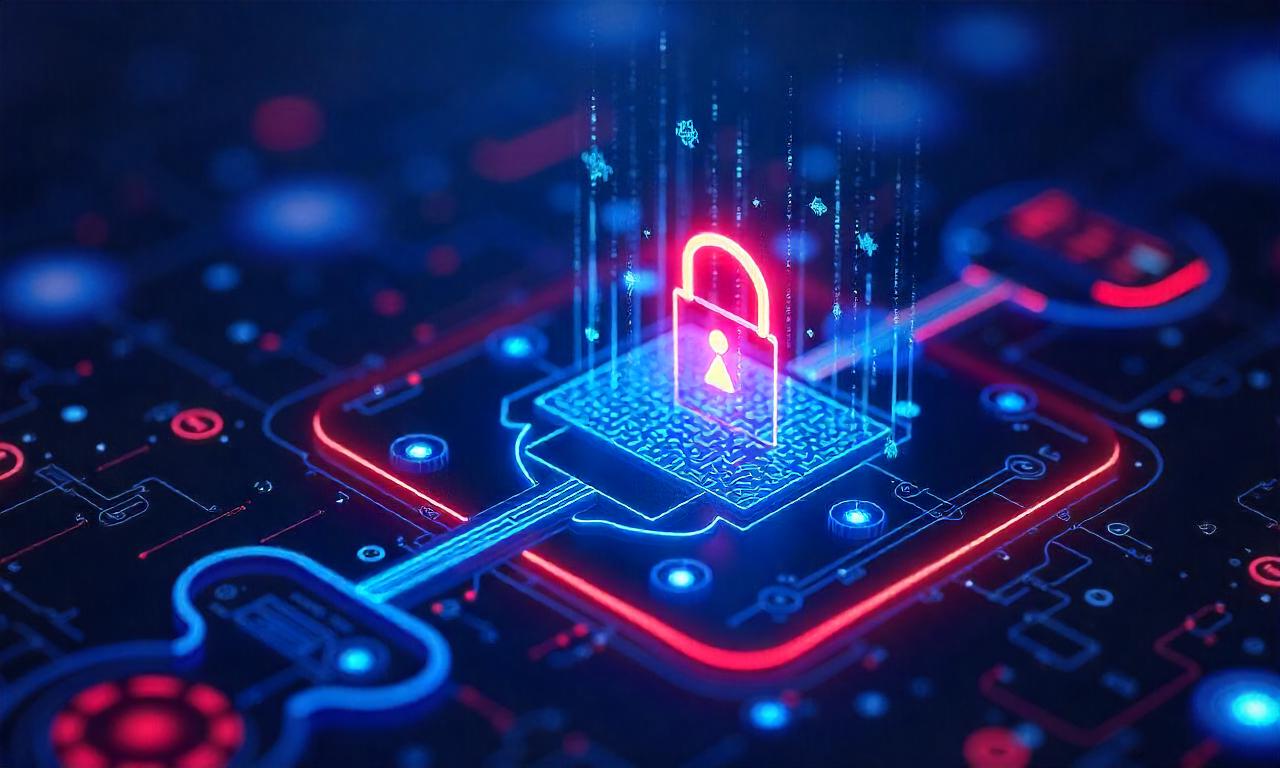Failed, Contact Support: What Is a VPN Kill Switch Feature and Why It Matters for Your Online Security
In today’s digital age, online privacy and security are more important than ever. Whether you're browsing the internet, streaming content, or conducting sensitive business transactions, a VPN kill switch feature acts as a critical safeguard against data leaks. What is a vpn kill switch feature? Simply put, it’s a safety mechanism that automatically disconnects your internet connection if theVPN fails, ensuring your personal information stays protected. This feature is essential for users who prioritize anonymity, especially when dealing with sensitive data or accessing geo-restricted content. In this article, we’ll explore the ins and outs of the kill switch feature, its role in modern VPNs, and how to leverage it effectively for long-term security.
—
Table of Contents
ToggleH2: Understanding the Basics of a VPN Kill Switch Feature
H3: 1. What Is a VPN Kill Switch Feature?
A VPN kill switch feature is a built-in function designed to automatically cut off your internet access if theVPN connection drops. This ensures that your device doesn’t revert to an unprotected network, such as public Wi-Fi or your home internet, while still transmitting sensitive data. The kill switch operates as a fail-safe, maintaining your privacy even when theVPN is temporarily unavailable.
For example, imagine you're working on a confidential document while connected to a VPN kill switch feature. If your internet connection suddenly fails—perhaps due to a server outage or a dropped signal—the kill switch will prevent your device from sending data over the unprotected network, avoiding potential data breaches. This feature is particularly important for users who rely on their VPN for secure browsing and are unwilling to risk exposing their personal information.
H3: 2. How Does It Work?
The kill switch works by monitoring the status of your VPN connection in real-time. When the connection is active, the feature keeps your device’s network traffic routed through theVPN. If the connection drops, the kill switch instantly blocks your internet access until theVPN is re-established. This process is seamless and typically occurs within seconds, minimizing the risk of exposure.
The mechanics of a kill switch depend on the type of protocol theVPN uses. For instance, IPsec or OpenVPN may employ different methods to detect a connection loss. Some kill switches are automated, meaning they activate without user input, while others require manual intervention. The latter is less common but still valuable for users who prefer control over their security settings.
H3: 3. Why Is It Essential for Online Privacy?
Without a VPN kill switch feature, a data leak could occur if your connection drops while you’re still active on the internet. This is a significant concern for users who access sensitive information or engage in secure browsing. The kill switch ensures that your online activities remain hidden even during brief outages, providing an extra layer of protection.
Moreover, the kill switch is crucial for geofencing and privacy. If yourVPN connection fails, you won’t accidentally share your real IP address or location with websites and services. This is especially important for internet users who rely on secure browsing to avoid being tracked or monitored. The feature’s simplicity and effectiveness make it a must-have in any modernVPN setup.
—
H2: The Role of a Kill Switch in Protecting Sensitive Data
H3: 1. Preventing Data Exposures
One of the primary functions of a VPN kill switch feature is to prevent data exposures. When yourVPN connection drops, the kill switch blocks all internet traffic until the connection is restored, ensuring that your personal information remains secure. This is particularly vital for users handling financial transactions, email communications, or health records.
For instance, if you’re using a public Wi-Fi network and yourVPN fails, the kill switch will prevent your device from accessing the internet until theVPN is back online. This means no unencrypted data is sent over the unsecured network, reducing the risk of hackers intercepting your information. Without this feature, a data leak could lead to identity theft or unauthorized access to your accounts.
H3: 2. Securing Network Connections
The kill switch also plays a key role in securing network connections. By automatically disconnecting your device from the internet when theVPN fails, it ensures that your online activities are always protected. This is especially important for remote workers or students who rely on secure browsing to access work or academic resources.
In addition to blocking internet access, some kill switches also block specific applications from using the internet until theVPN is re-established. This multi-layered protection ensures that even if yourVPN fails, critical apps like email clients or banking apps remain offline, preventing data breaches. The kill switch thus becomes an integral part of a comprehensive security strategy.
—
H2: Types of Kill Switch Features in Modern VPNs
H3: 1. Automatic vs. Manual Kill Switches
VPNs offer two main types of kill switch features: automatic and manual. An automatic kill switch is the most common and most user-friendly option. It activates instantly when theVPN connection drops, without requiring any action from the user. This ensures maximum security even during brief outages.
On the other hand, a manual kill switch requires the user to manually trigger the disconnection when they notice theVPN is offline. While less convenient, this type gives users more control over their security settings. However, it may leave gaps in protection if the user forgets to activate it. The choice between automatic and manual depends on the user’s security priorities and technical expertise.
H3: 2. Application-Level vs. Network-Level Kill Switches
Another distinction lies in the level of protection the kill switch provides. Application-level kill switches block specific apps from using the internet if theVPN fails. This is useful for users who want to protect only certain data—like banking apps or email clients—while allowing other apps to remain online.
In contrast, network-level kill switches block all internet traffic from the device, ensuring complete privacy. This is the more robust option, as it prevents any data from being sent over an unprotected network. Network-level kill switches are ideal for users who need maximum security, such as journalists, whistleblowers, or people handling classified information.
H3: 3. How to Enable a Kill Switch
Enabling a kill switch is usually a simple process. Most modern VPNs include this feature as a default option, but users should check their settings to confirm. For automatic kill switches, the VPN provider will handle the activation automatically once the connection drops.
To enable a manual kill switch, users need to toggle the setting on or off in theVPN’s configuration. Some providers also offer customizable options, allowing users to set specific rules for which apps or services are blocked. Regardless of the type, the kill switch is a straightforward tool that enhances online security without requiring advanced technical knowledge.
—
H2: The Benefits of a Kill Switch for Users
H3: 1. Enhanced Privacy and Anonymity
The kill switch significantly enhances privacy by ensuring continuous anonymity even when theVPN connection is down. This is particularly important for users who rely on secure browsing to avoid being tracked. By blocking internet access, the kill switch prevents your real IP address from being exposed, maintaining your digital footprint.
For example, online shoppers or social media users may unknowingly share personal data over an unprotected network if theVPN fails. A kill switch ensures that your data remains encrypted and your activities stay private, even during brief outages. This uninterrupted privacy is a key advantage of using a VPN kill switch feature.
H3: 2. Peace of Mind for Sensitive Activities
The kill switch provides peace of mind for users engaging in sensitive activities, such as financial transactions or email communication. Knowing that your internet connection is protected by a fail-safe mechanism reduces anxiety about potential data leaks.
In a workplace setting, the kill switch ensures that business data isn’t exposed to unsecured networks. For remote workers, this feature is crucial for maintaining confidentiality and trust. The reliability of the kill switch makes it an indispensable tool for security-conscious users.
H3: 3. Compatibility with Different Devices and Operating Systems
Many VPNs support kill switch features across multiple devices and operating systems, including Windows, macOS, iOS, and Android. This cross-platform compatibility ensures that users can maintain security regardless of the device they are using.
Additionally, some kill switches are app-specific, allowing users to tailor their security settings to individual needs. For instance, a user might activate the kill switch for their email app but keep other apps connected to the internet. This flexibility makes the kill switch a versatile security tool that adapts to different use cases.
—
H2: Real-World Applications and Use Cases
H3: 1. Protecting Data on Public Wi-Fi
Public Wi-Fi networks are common targets for hackers and data snoopers. A VPN kill switch feature is essential for users accessing these networks, as it blocks internet access if theVPN fails. This prevents unauthorized access to your personal data.
For example, when using free public Wi-Fi at a coffee shop or airport, the kill switch ensures that your device doesn’t leak information if theVPN connection drops. This is particularly valuable for mobile users who frequently switch between networks. The kill switch acts as a shield, protecting your online activities from potential threats.

H3: 2. Securing Online Transactions
Online banking and shopping require secure connections to protect financial data. A kill switch ensures that your transaction data is never transmitted over an unprotected network. This is critical for users handling sensitive information, as even a brief disconnection could lead to security vulnerabilities.
By blocking internet access during a VPN failure, the kill switch prevents malicious actors from intercepting your data. This adds an extra layer of security to online transactions, ensuring safe and encrypted communication with financial institutions or e-commerce platforms.
H3: 3. Ensuring Geo-Restricted Access
For users accessing geo-restricted content, such as streaming services or censored websites, a kill switch is a game-changer. If theVPN connection drops, the kill switch ensures that your device remains offline, preventing location exposure.
This is particularly useful for media consumers or researchers who need to maintain anonymity while accessing content from different regions. The kill switch ensures that your real IP address isn’t revealed, allowing continuous access to region-specific content without compromising your privacy.
—
H2: Comparing Kill Switch Features Across Leading VPN Providers
H3: 1. Popular VPNs with Kill Switch Features
Several leading VPN providers offer kill switch features as a standard component of their service. For example:
- NordVPN: Features an automatic kill switch that blocks internet access if theVPN fails.
- ExpressVPN: Includes a kill switch that protects all devices on the same network.
- Private Internet Access (PIA): Provides a kill switch that can be enabled manually or automatically.
- VyprVPN: Offers a network-level kill switch to secure all traffic.
These VPNs ensure that users can maintain privacy even during unexpected outages, making them ideal choices for security-conscious individuals.
H3: 2. Key Differences in Kill Switch Implementation
While all these VPNs include kill switch features, the implementation varies. For instance:
- Automatic vs. Manual: Some VPNs activate the kill switch automatically, while others require user input.
- Network-Level vs. Application-Level: A network-level kill switch blocks all internet traffic, while an application-level one targets specific apps.
- Compatibility: Most VPNs support multiple devices and operating systems, but some have limitations.
The best kill switch depends on the user’s needs. For maximum security, a network-level automatic kill switch is recommended.
H3: 3. Performance and Reliability
The performance of a kill switch can affect user experience. A quick and seamless activation is ideal, while slow or glitchy switches might interrupt your workflow.
To ensure reliability, users should choose a VPN with a robust kill switch that integrates smoothly with their internet connection. Testing the feature is important to confirm that it works as intended.
—
H2: Best Practices for Using a Kill Switch Effectively
H3: 1. Enabling the Kill Switch by Default
To maximize security, users should enable the kill switch as a default setting. This ensures that even if you forget to activate it, your data remains protected during unexpected outages.
Many VPNs allow users to toggle the kill switch on or off in the settings. For new users, enabling it by default is a simple way to stay secure without compromising convenience.
H3: 2. Combining with Other Security Tools
A kill switch is most effective when used in conjunction with other security tools, such as firewalls, anti-malware software, and two-factor authentication. This multi-layered approach provides comprehensive protection against online threats.
For instance, while a kill switch prevents data leaks, a firewall can block malicious traffic, and anti-malware can detect and remove threats. Together, these features create a secure environment for online activities.
H3: 3. Regularly Testing the Feature
It’s important to test the kill switch periodically to ensure it works as expected. This can be done by disconnecting theVPN and checking if your internet access is blocked.
Testing also helps identify any bugs or glitches in the kill switch. If the feature fails to activate during a simulated outage, users should contact support to report the issue.
—
H2: FAQs About the VPN Kill Switch Feature
H3: 1. Q: What Is a VPN Kill Switch Feature?
A: A VPN kill switch is a security feature that blocks all internet traffic if the VPN connection drops, preventing data leaks and unprotected browsing. It ensures that your online activities remain private and secure even during brief outages.
H3: 2. Q: How Does a Kill Switch Work?
A: A kill switch monitors the VPN connection in real-time. If the connection drops, it instantly cuts off your internet access until theVPN is re-established. Some kill switches are automatic, while others require manual activation.
H3: 3. Q: Is a Kill Switch Necessary?
A: Yes, especially for users who handle sensitive data or require continuous privacy. A kill switch ensures that your data isn’t exposed even during unexpected outages, making it a must-have for secure browsing.
H3: 4. Q: Can a Kill Switch Be Used on Multiple Devices?
A: Most VPNs support kill switches on multiple devices, but some may require individual activation on each device or platform. Check your VPN provider’s documentation to confirm compatibility.
H3: 5. Q: What Are the Pros and Cons of a Kill Switch?
A:
- Pros:
- Prevents data leaks during outages.
- Maintains privacy without user input.
- Supports secure browsing on multiple platforms.
- Cons:
- May cause minor disruptions in internet access.
- Requires configuration for manual kill switches.
- Not all VPNs offer this feature by default.
—
Conclusion
In summary, a VPN kill switch feature is a critical tool for ensuring online security. Whether automatic or manual, it blocks internet access during unexpected outages, preventing data leaks and maintaining privacy. The benefits of a kill switch extend to users of all levels, from casual internet users to professionals handling sensitive data.
By comparing different kill switch features and choosing a reliableVPN provider, users can maximize their protection. Additionally, testing the feature and enabling it by default are best practices to stay secure in an increasingly connected world. With the right setup, a kill switch becomes an invisible shield, ensuring peace of mind during every online activity.
—
Summary
A VPN kill switch feature is an essential security tool that blocks internet access if the VPN connection drops, preventing data leaks and unprotected browsing. This feature ensures continuous privacy by cutting off all traffic to unsecured networks. With automatic or manual options, it provides flexibility while maintaining security. Leading VPNs like NordVPN, ExpressVPN, and Private Internet Access offer robust kill switches that protect sensitive data. Regular testing and enabling the feature by default are key steps to maximize protection. Whether you're working remotely, shopping online, or accessing geo-restricted content, a kill switch is indispensable for online security.
Table: Comparison of Kill Switch Features in Popular VPNs
| VPN Provider | Kill Switch Type | Compatibility | Performance | Additional Features |
|---|---|---|---|---|
| NordVPN | Automatic, Network-Level | All Devices | Fast, Seamless | Includes leak protection, double encryption |
| ExpressVPN | Automatic, Network-Level | All Devices | Reliable, Stable | Strong security, 24/7 customer support |
| Private Internet Access (PIA) | Manual/Network-Level | Multiple Platforms | Efficient | Affordable pricing, kill switch for specific apps |
| VyprVPN | Network-Level | All Devices | Secure, Consistent | Military-grade encryption, kill switch for all traffic |
| ProtonVPN | Automatic, Network-Level | Cross-Platform | Quick Activation | Strong privacy, zero-logs policy |
This table highlights the key differences between VPN kill switch features, helping users choose the best option for their security needs.
Final Thoughts
A VPN kill switch feature is more than just an added convenience—it’s a critical component of online security. By automatically disconnecting your internet access during outages, it ensures that your data remains private and your activities are secure. Whether you're a casual user or a security expert, understanding and leveraging the kill switch can significantly enhance your digital safety. In the end, a kill switch is a simple yet powerful feature that protects your privacy and keeps your online presence secure.














